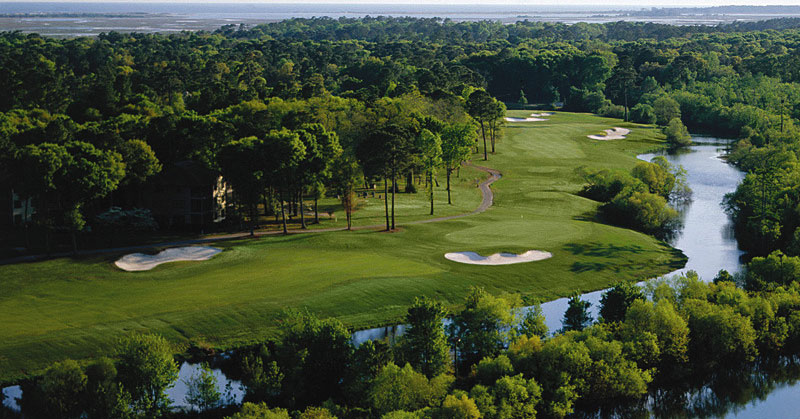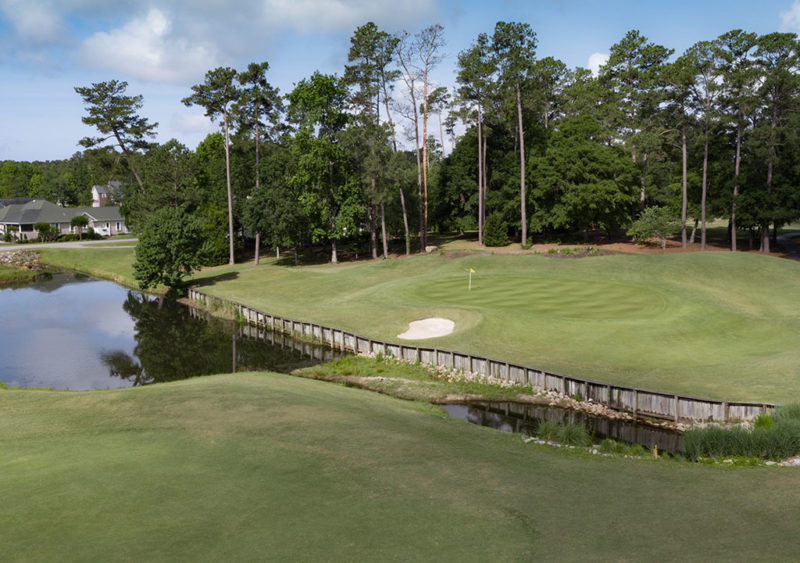Brunswick County destination even more laid back than neighbor to the south
SUNSET BEACH, North Carolina – Situated just north and a little east of the border between North and South Carolina in the inland confines of Brunswick County, N.C., Sea Trail Resort offers considerable evidence why visitors and homeowners have come to enjoy in this little corner of the South.
Set just a 15-minute jaunt across the Intracoastal Waterway from Sunset Beach (the southernmost of North Carolina’s Brunswick Islands) and the Atlantic Ocean, Sea Trail Resort comprises more than 2,000 acres and boasts quite a few creature comforts.
Here you will find two golf clubhouses, about 1,300 single- and multi-family homes, nearly 600 stay-and-play villas and rental units, onsite dining, outdoor and heated indoor pools, and approximately 190 acres of undeveloped land. Oh yeah, and a whole bunch of friendly people to make your stay the absolute best it can be.
The centerpiece of the resort is its three golf courses, designed by architectural luminaries Rees Jones, Dan Maples, and Willard Byrd. Each of the eponymous layouts winds through forests and around pristine lakes, offering a variety of tests.
The Jones course, considered the resort’s premium test, is kept in great year-round shape. The Byrd course allows a little more relief for the wayward, while the Maples (the first built at Sea Trail) contains the sternest overall set of par 5s on the property.

Jones course one on NC’s best, but members love the Byrd
The Jones course is relatively straightforward, with plenty of mounded fairways bordered by lakes and water hazards on 11 holes and lined by ancient oaks and pines. There are also variable-sized bunkers along the routing, which stretches 6,761 yards from the tips.
The 189-yard par-3 fifth and 400-yard par 4 sixth are indicative of the holes Jones designed here, with the former featuring a retaining wall that frames the green and the latter with water on the left and extensive mounding and bunkering guarding the fairway.
On the back nine, the par 4 10th – at 345 yards – presents trials in the form of fairway traps and mounding as it doglegs left to right around a lake. The 144-yard par 3 13th features palm trees on an island inside a large waste bunker that can obscure the putting surface.
There are also some stunning views of the waterway at Jones, most notably at the 340-yard par 4 14th, which parallels that sizable water hazard.
The Jones course is likely the most challenging of the three 18s at Sea Trail; it’s good enough to have hosted a U.S. Open qualifying tournament in 2006, the same year it was voted one of the top 100 courses in North Carolina by Golf Digest.
The Byrd course, which plays 6,750 yards from the tips allows golfers ample opportunities to hit the driver, but it doesn’t make length off the tee necessary for success. It contains seven doglegging holes of varying severity that reward shot-making and creativity.
The Byrd is more demanding on better golfers, while mid- to high-handicappers are fond of it because it isn’t overly penal from the middle tees. Regardless of the starting blocks used, finding the correct landing zones and missing hazards are keys to success. It curls around seven man-made lakes, with many waste areas also in play.
Eight of the Byrd holes require carries over either water or – in the case of the stunning 407-yard, dogleg-left par 4 fourth – sand. The tees at No. 4 are islands in a huge sand expanse and another large waste area lines the fairway from the tee to the landing area. The 190-yard, par 3 seventh is played across a large bunker to a green engirded by traps of different sizes and shapes.
On the home half, the 528-yard, par 5 13th has deep bunkers on each side of the landing area; the approach is downhill and over a pond to one of the course’s smallest greens. The par 5 18th – placed between two ponds but weighing in at just 469 yards from the tips – finishes the round at the Jones/Byrd Clubhouse.
Among the Byrd course’s many accolades are a four-star rating by Golf Digest and a spot on Golfweek’s “Best Resort Course of Distinction” list. It also ranks high among women golfers who prefer the brains-over-brawn approach.

Maples course requires power & finesse
The Maples course was the first at Sea Trail and has charmed golfers since its opening. Set within a nature preserve, it has five holes that play along Calabash Creek.
The Maples’ par 5s, the shortest of which is 545 yards, will challenge even the biggest hitters. Even though it’s the longest of Sea Trail’s three layouts – the 6,797-yard Maples is a very player-friendly layout, offering ample landing room and greens that roll smooth and true.
It’s those putting surfaces that are the Maples primary means of defense. With substantial undulations, golfers should pay attention to the pin sheet and make sure they’re aiming for the proper portion of the segmented greens. Most of the complexes are gently raised, adding to the strategy.
The round begins with a pair of short par 4s: a 315-yarder and 350-yarder. The second hole is defended by two bunkers at the front, with water along its entire right side.
The most crucial stretch is the mid-section, where four consecutive par 4s represent three of the course’s hardest holes. The 455-yard ninth (the No. 1 handicap hole) is the longest two-shotter at Maples, with bunkers on both sides of the landing area and another left of the green. The 10th, at 420 yards, has a huge waste area along the right of the putting surface that shouldn’t be a factor for better players.
Another large waste area runs alongside the 575-yard par 5 15th; it invades the prime lay-up area to catch shots that get a little too close. The round ends at an uphill 401-yard par 4, which is played over four large bunkers that front the elevated green.
While the Jones and Byrd courses at Sea Trail share a clubhouse, the Maples course has a stand-alone facility.
The trio of courses at the Sea Trail offer considerable variety, asking visitors to use every club in the bag. The resort is a fine destination in this little corner of North Carolina, and a great – and comparatively quiet – option to busier Grand Strand and Myrtle Beach, which are about located 45 minutes to the south.



